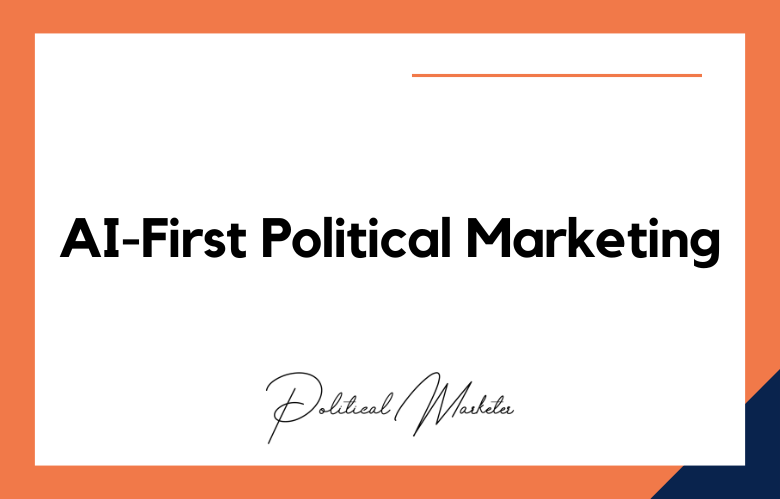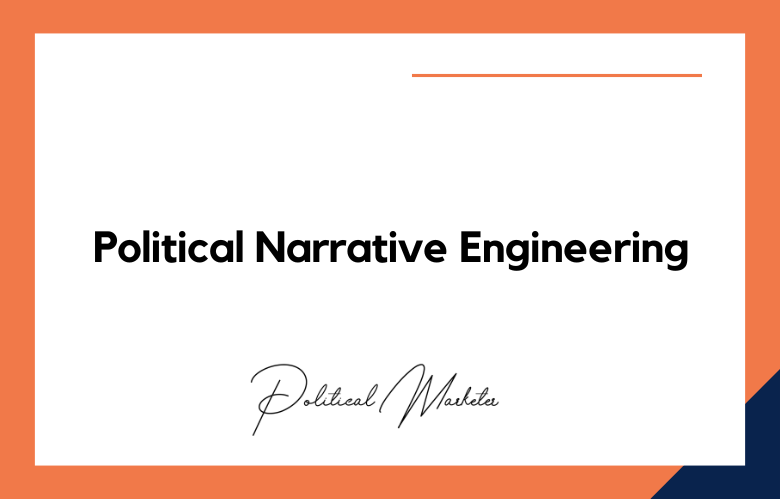With the world advancing every passing day, technology has taken over various industries to provide efficient and effective results. The political sector is no exception. Political campaigns have been growing expensive over the years, with the need to reach a larger audience through various channels. The introduction of data-driven politics has seen a significant shift in campaign strategies, making AI-driven content analysis necessary. We’ll explore AI-driven content analysis for political campaigns and how it can help shape the future of politics.
What is AI-Driven Content Analysis for Political Campaigns?
AI-driven content analysis uses technology algorithms and machine learning to analyze and interpret large-scale political campaign data accurately.
With data being one of the essential keys to running a successful campaign, AI-driven content analysis has become vital in analyzing targeted communication, voter sentiments, and even public opinion.
Using this technology, political campaigns can stay updated with voters’ changing attitudes and make strategic decisions based on this data.
Unmasking the Strategy: AI-Driven Content Analysis in Political Campaigns
Artificial intelligence (AI) has become increasingly prevalent in political campaigns in recent years. One of the key ways in which AI is being used is through content analysis, which entails using machine learning algorithms to analyze large volumes of digital communications such as social media posts, emails, and text messages.
AI-driven content analysis in political campaigns aims to gain insights into voter sentiment and behavior. By analyzing the content of communications, AI algorithms can detect patterns and trends that could inform campaign messaging and strategy.
For example, if many social media posts about a particular candidate express concern about their stance on a specific policy issue, the campaign could modify its messaging to address those concerns.
Revolutionizing Political Messaging: The Power of AI-Driven Content Analysis
In recent years, political messaging has undergone a massive transformation with the advent of artificial intelligence (AI) and machine learning technologies.
Campaigns and political parties are now leveraging the power of AI-driven content analysis to refine their messaging strategies and tailor their messages to specific audiences. This revolution in political messaging has the potential to create a more engaged and informed electorate by providing voters with personalized and targeted information.
One of the most potent aspects of AI in political messaging is its ability to analyze vast amounts of data quickly and accurately. Using natural language processing (NLP) algorithms, AI-driven content analysis can identify the key topics, sentiments, emotions, and linguistic styles that resonate with specific demographics.
This analysis can help campaigns and political parties assess the effectiveness of their messaging strategies and make data-driven decisions that optimize their outreach efforts.
Campaigning in the Digital Era: Leveraging AI-Driven Content Analysis
Campaigning in the digital era has evolved significantly with the advent of Artificial Intelligence (AI) technologies. AI-driven content analysis is now a vital tool for political campaigners, as it allows them to collect and analyze large amounts of data using AI algorithms to gain insights into potential voters’ preferences, opinions, and behaviors.
Social media platforms like Facebook highlight the importance of AI-driven content analysis in political campaigning. Twitter has emerged as a critical channel for connecting candidates with prospective voters.
These platforms have become hubs for political discussions, enabling parties and candidates to reach out to voters directly, share their messages, and engage with their supporters.
Decoding Political Campaigns: How AI-Driven Content Analysis Provides Insight
Political campaigns have become increasingly sophisticated with the adoption of technology. Political campaigns are notorious for using catchy slogans, high-energy rallies, and eye-catching advertisements to sway public opinion in their direction.
With the advent of artificial intelligence (AI), candidates and their campaign teams now have access to new tools that enable them to analyze vast amounts of data and gain insights into public opinion in ways that would have been impossible in the past.
AI-driven content analysis is one such tool. It allows political campaigns to analyze large volumes of data from various sources, including social media and news sites.
This information can be used to identify critical issues and topics of interest to voters and assess the public’s sentiment regarding specific candidates and policies.
From Data to Strategy: AI-Driven Content Analysis in Political Campaigns
The role of AI in political campaigns has become increasingly prevalent in modern times. With the emergence of advanced data analytics tools, political campaigns can leverage AI-driven content analysis to collect and interpret vast amounts of data to inform their campaign strategies.
AI-based content analysis analyzes messages communicated in different formats, such as speeches, social media posts, surveys, and interviews, to gain insights into audience preferences, opinions, and behaviors.
In political campaigns, AI-driven content analysis can predict voter behavior, identify key campaign issues, and target specific voting demographics. With access to large volumes of data, AI algorithms can identify patterns and trends that are difficult for humans to detect.
Through natural language processing (NLP) techniques, AI algorithms can parse texts, identify keywords, and determine sentiment to reveal hidden motivations and preferences of voters.
These insights are valuable in crafting effective campaign messaging, developing targeted advertising strategies, and determining the most effective campaign channels for maximum impact.
Sifting Through the Noise: AI-Driven Content Analysis for Political Campaigns
In recent years, political campaigns have increasingly relied on technology to navigate the complex landscape of voter opinions and motivations. To this end, Artificial Intelligence (AI) has emerged as a powerful tool for political operatives seeking insights into their target audiences.
One such application of AI in political campaigns is content analysis, whereby machine learning algorithms analyze large volumes of data in search of patterns and insights.
By sifting through vast amounts of textual and visual content, AI can better understand the preferences and concerns of different voter segments.
The benefits of AI-driven content analysis for political campaigns are numerous. For one, it allows campaigns to tailor their messaging to specific voter groups better, increasing the effectiveness of their outreach efforts.
By analyzing social media and other online platforms, campaigns can gain real-time insights into the dynamics of the race and adjust their strategies accordingly. Moreover, AI can help identify potential risks and vulnerabilities in a campaign’s messaging, allowing for course corrections before it’s too late.
Benefits of AI-Driven Content Analysis for Political Campaigns?
Personalized Messaging
One of the most significant advantages of AI-driven content analysis for political campaigns is the ability to personalize messages to individuals. By analyzing numerous data sources, such as social media activity, past voting patterns, and demographics, campaigns can tailor their messages for maximum impact.
For example, a campaign can discern which issues are most important to a specific demographic, enabling them to adjust their messaging accordingly. Personalization has been shown to increase the effectiveness of messaging, leading to better engagement and, ultimately, higher voter turnout.
Predictive Analytics
AI-driven content analysis enables campaigns to use predictive analytics to establish accurate voter behavior probabilities, up-to-date trends, and ground-level sentiment analysis.
As a result, campaigns can make more informed decisions on messaging, strategy, and ad spending, significantly improving the accuracy of their decision-making process.
For example, the data suggests that a candidate is more likely to win the support of a particular voting bloc. In that case, a campaign can tailor its message, invest in targeted advertising, and allocate resources accordingly.
Real-Time Analysis
With traditional content analysis, campaigns faced the challenge of collecting and analyzing large amounts of data, often over extended periods.
With AI-driven content analysis, campaigns have real-time capabilities to access, analyze, and use data to inform campaign decisions. This speed enables movements to react quickly to voter sentiment and adjust messaging and outreach efforts immediately.
Cost Savings
Utilizing AI-driven content analysis can lead to significant cost savings for political campaigns. By streamlining the decision-making process only based on the analysis rather than assumptions, campaigns can optimize their resource allocation and advertising spend efficiently.
This method enables more targeted advertising, reducing spend on low-yield voters. Campaigns can better allocate their resources, focusing efforts more narrowly and achieving their goals more efficiently.
Voter Engagement
Political campaigns use AI-driven content analysis to improve their messaging strategies to better engage with a target audience. Messages that resonate with voters and targeted advertising campaigns have effectively increased voter engagement. These methods have increased voter participation, voter loyalty, and voter retention.
Conclusion
With the adoption of AI-driven content analysis for political campaigns, the political sector will see a significant transformation in the future. The technology helps campaigns cost-effectively reach larger audiences and provides accurate data to make informed decisions.
The technology helps curb the spread of fake news and propaganda. Consequently, this results in more transparent and effective elections. As the world advances, adopting modern technologies that make operations in every sector more efficient and effective is essential.
AI-driven content analysis is the future of political campaigning, and it’s high time we incorporate it into our election processes.
In conclusion, AI-driven content analysis in political campaigns is the future of intelligent campaigning. It’s an essential tool for any political movement that wants to stay ahead of the curve.
With the technology, campaigns can gather and analyze data in real time, adjust for changing attitudes, and, crucially, make strategic decisions that increase the chances of a successful campaign. Political campaigns that invest in AI-driven content analysis will always enjoy the benefits of accurate data-driven decision-making and strategic messaging.










